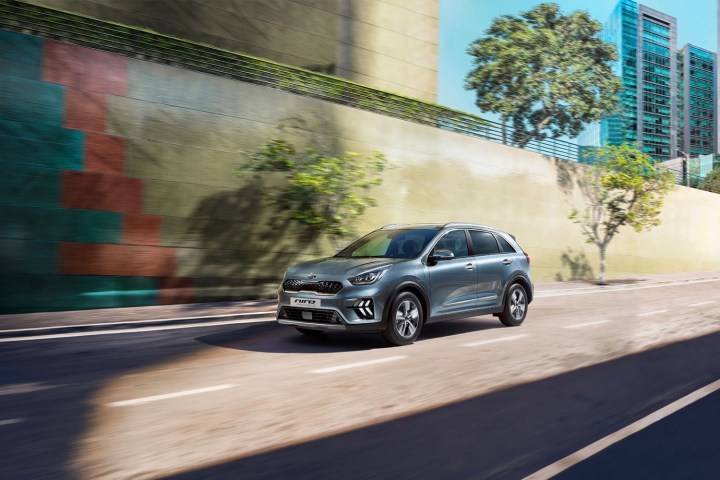
Available as a hybrid and plug-in hybrid, the Niro is Kia’s answer to the Toyota Prius and Prius Prime. Kia needs to keep the Niro models fresh to stay on pace with Toyota, so both the hybrid and plug-in hybrid versions of the Niro are getting a host of small updates for the 2019 Geneva Motor Show.
The biggest change is to the exterior, which picks up styling cues from the all-electric Niro EV introduced at the 2018 Los Angeles Auto Show. The front bumper, rear bumper, and taillights have been redesigned, according to Kia, while new headlights incorporate the “ice cube” lighting element first seen on the Kia Sorento. But it will still take a keen car spotter to notice the differences.
On the inside, both the hybrid and plug-in hybrid models get an infotainment upgrade. An 8-inch touchscreen and 4.2-inch TFT instrument-cluster are now standard, but buyers can upgrade further to a 10.25-inch touchscreen and 7-inch TFT instrument-cluster display. The Niro was previously sold with a standard 7-inch touchscreen and optional 8-inch screen, although the optional 7-inch TFT display carries over. As before, the infotainment system is compatible with Apple CarPlay and Android Auto.
In Europe, if not elsewhere, the Niro also gets new interior color packages that should add a little style to the cabin. Kia didn’t provide any photos, but we’re intrigued by the option of plum-colored leather upholstery. That’s a pretty bold choice.
Kia did not mention any mechanical changes, so the hybrid and plug-in hybrid Niro models will continue using two versions of the same powertrain. Both get a 1.6-liter four-cylinder gasoline engine and six-speed dual-clutch transmission, assisted by an electric motor. But the plug-in hybrid model gets a larger battery pack and the ability to recharge from an external power source, giving it the capability to drive on electric power only for up to 26 miles. Total system output will likely remain unchanged, meaning 139 horsepower and 195 pound-feet of torque for both variants.
One item missing from the list of updates is all-wheel drive. Kia markets the Niro as a crossover, so it’s a bit odd that the vehicle is front-wheel drive only. Even the Toyota Prius now offers the option of all-wheel drive, but Kia did not apparently see fit to follow suit.
The updated Kia Niro models debuting at the 2019 Geneva Motor Show are European-spec, but the same changes will likely carry over to models sold in the United States. Expect the U.S.-spec versions to appear sometime in the next months, and for pricing and fuel-economy information to follow shortly after that. Kia will also unveil an all-electric concept car in Geneva.
Editors' Recommendations
- 2025 Hyundai Tucson Plug-In Hybrid gets improved tech features
- 2023 Kia Niro EV first drive review: Practical doesn’t have to bore you to tears
- Jeep’s plug-in hybrid Wrangler will silently prowl the great outdoors
- 2020 Karma Revero GTS adds performance to go with its sleek looks
- 2020 Audi A8 gains plug-in hybrid powertrain, sporty S8 model


